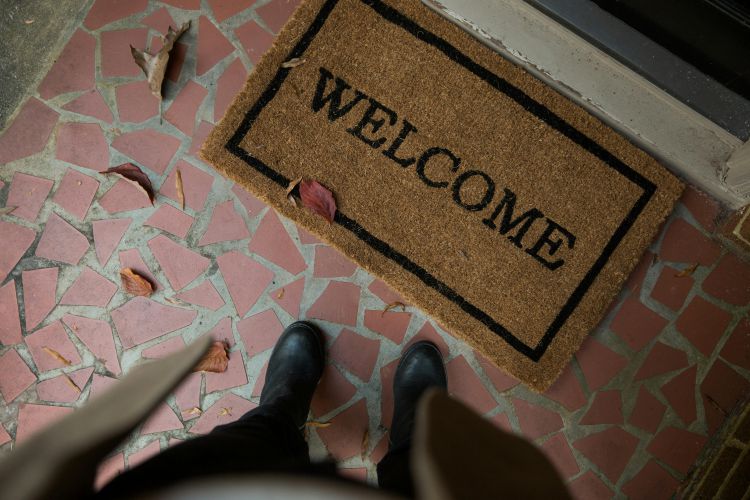Have you ever stood outside someone’s front door and thought, “Wow, this place has it together”? It could be the fresh paint, the clean porch, or the way the plants seem to smile at you. Whatever it is, it sets the tone. You haven’t even stepped inside, but you already have a sense of what kind of space—and person—awaits you on the other side.
First impressions matter. Not just in job interviews or first dates. Your home is making one every day. Whether you’re hosting a friend, selling your place, or greeting delivery drivers on the regular, what people see when they arrive speaks volumes. And with the world spending more time looking at curb appeal online (thanks, Zillow), the idea of “home” has never been so visual.
In this blog, we will share how to make your home’s first impression count—from the big upgrades to the small details—and why that matters more now than ever before.
The Entry Point to Everything Else
The outside of your home is like a movie trailer—it sets the tone without revealing everything. Small details like a bold door or tidy shrubs quietly show care and intention. Since the pandemic blurred the line between work and home, people have started seeing their homes as reflections of who they are. Now, more homeowners are updating their exteriors not just to impress, but to match the pride they feel inside. It’s not about flash—it’s about quiet, thoughtful touches that speak for themselves.
That’s why materials like thin veneer stone are growing in popularity. This lightweight, flexible surface option brings character and texture to outdoor entryways, columns, and facades—without the weight or expense of full stone. It gives the timeless look of natural stone but is easier to install, especially for renovations.
Even just wrapping a porch post or fireplace surround can dramatically change the mood of a space. It draws the eye, adds depth, and makes the entire entry feel more grounded. It’s a small change with a big impact. And in today’s world of quick scrolling and instant judgment, small changes are powerful.
The Power of Contrast and Detail
Designers love contrast for a reason. It creates visual interest. But you don’t need to be a pro to understand that a modern black door against a warm, textured surface will stand out. Or that neat landscaping against a smooth walkway can make a space feel instantly intentional.
Too often, people focus only on paint when thinking about first impressions. But texture matters just as much. A home with balance between hard and soft surfaces—like stone with wood or metal with greenery—tends to feel more welcoming. It shows depth. It feels layered, lived in, and loved.
Lighting is another overlooked hero. A simple overhead light at the entry might be functional, but layered lighting—wall sconces, pathway lights, or uplighting for trees—can make the home glow in all the right ways. It also adds safety, which people notice even if they don’t say it out loud.
Door hardware, house numbers, and even the doormat contribute to that first look. Are they clean? Are they stylish? Or are they left over from three owners ago? Updating these details is one of the easiest ways to modernize a home’s feel. And most upgrades can be done without touching the core structure.
Landscaping That Works With You
Not everyone has time—or the interest—for perfect hedges and seasonal flowers. But that doesn’t mean the yard should be forgotten. Smart landscaping today is about low-maintenance plants that look good year-round. It’s about function as much as beauty.
Raised beds near the entry can add a pop of color without the upkeep of a full garden. Gravel or stone paths are cleaner and easier than worn patches of grass. Planters can help define a space or soften a hard edge. And native plants—those that naturally thrive in your area—cut down on water use and labor.
Another trend gaining ground? Edible landscaping. Think herbs by the doorstep or a small fruit tree near the walkway. It’s beautiful, useful, and a little unexpected—just enough to make someone do a double take.
When Inside Starts at the Threshold
The first impression doesn’t stop at the door. What people see the moment they step inside counts, too. If the entry is cluttered, dark, or confusing, it can throw off everything else—no matter how nice the rest of the house is.
That’s why functional design matters. Hooks, benches, or small tables near the entrance help people settle in. Mirrors reflect light and make the space feel bigger. A clean line of sight to the next room keeps things feeling open. And yes, the smell of something familiar—like baked cookies or even fresh citrus—can make a space feel instantly welcoming.
Shoe storage, key bowls, and mail sorters may not seem exciting, but they give structure. And structure lowers stress. When a guest sees an entry that works well, they feel like the whole home is in good hands.
The bottom line? In the age of endless scrolling and digital listings, homes are constantly on display. Whether it’s for friends, neighbors, or that one person from high school who found your address online, what your home says at first glance matters more than ever.
But making a strong first impression isn’t about perfection. It’s about intention. Thoughtful choices—like adding texture, updating hardware, or simply clearing the clutter—go a long way. You don’t need a massive budget. You need a clear sense of what story you want your home to tell.
So next time you pull into your driveway or walk up your porch steps, pause for a second. Look around. Ask yourself what that first glance is saying. And if it’s not saying what you want, know that it only takes a few smart choices to shift the message entirely.

